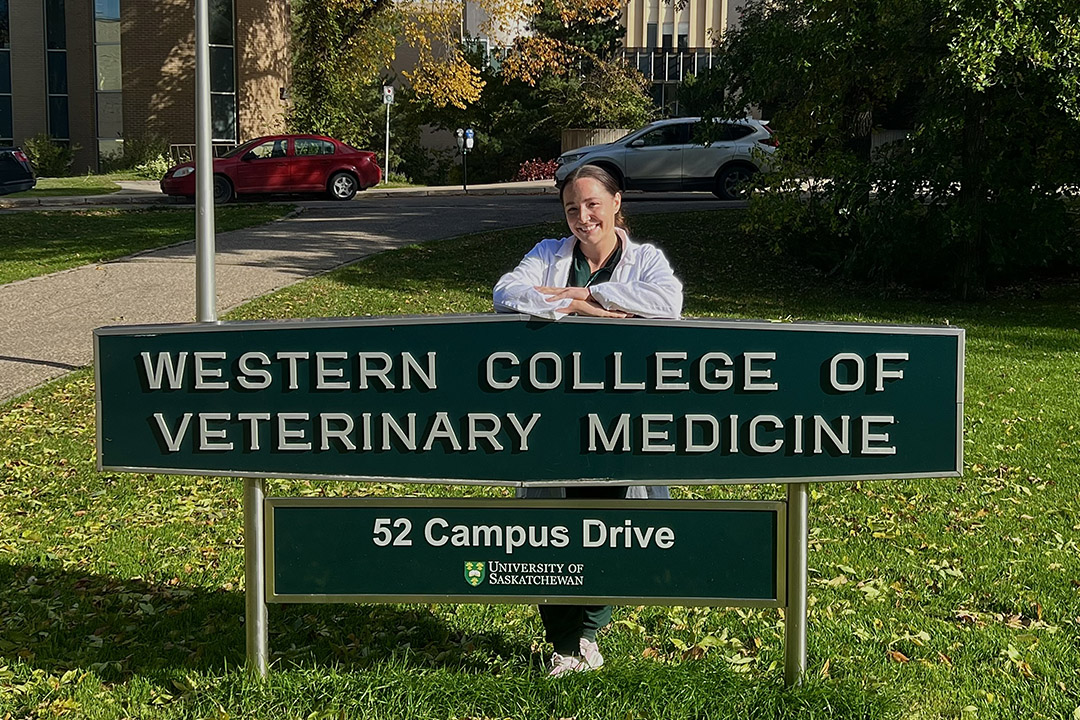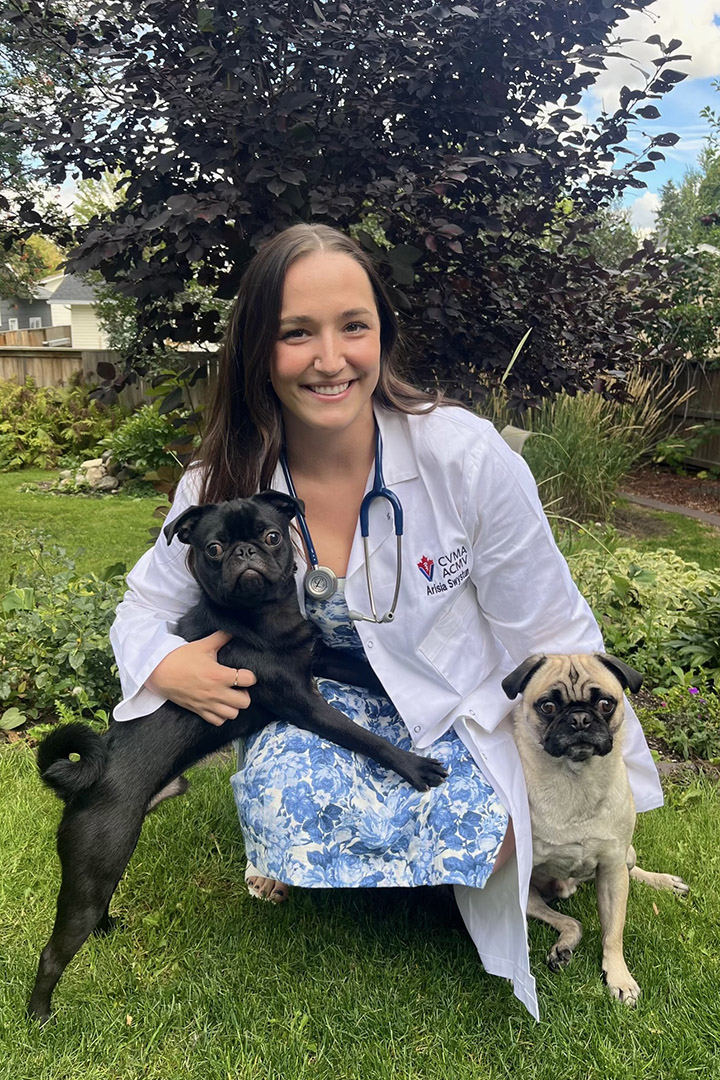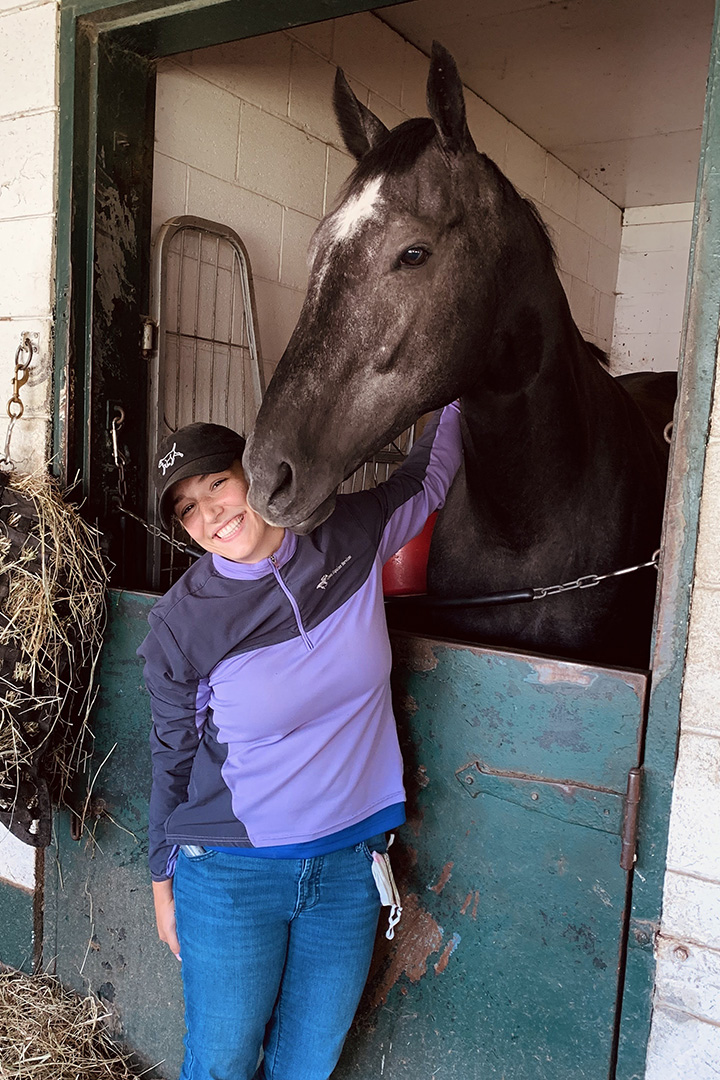
Professional pivot leads veterinary student to new challenges
To Arisia Swystun of Saskatoon, Sask., the sights and sounds and smells of a busy emergency veterinary hospital are as familiar as the back of her own hand.
By Lynne Gunville
The registered veterinary technician (RVT) worked at the Western College of Veterinary Medicine’s Veterinary Medical Centre (VMC) for the past two years, providing patient care for large and small animals as well as exotic species.
Most recently, Swystun was responsible for triaging and prioritizing patients that came through the VMC’s small animal emergency and critical care service — a role that she describes as a career highlight. In addition to her clinical responsibilities, she enjoyed her daily interactions with WCVM veterinary students and the college’s clinical faculty.
“Moving to a teaching hospital was very exciting for me. I was happy to have students around who are eager to learn and practise their clinical skills,” says Swystun, who switched roles in mid-August. She’s now one of the WCVM’s first-year veterinary students — learning from her former clinical team members.
Swystun’s career pivot comes six years after she completed the two-year veterinary technician diploma program at Sheridan College in Brampton, Ont. During her studies, she volunteered at Allen Equine Services and at Toronto’s Woodbine Racetrack, and she eventually landed a lead RVT position at the clinic where she worked for six thoroughbred racing seasons.
“I learned a lot from the veterinarians and RVTs who worked at Allen Equine Services, and I gained knowledge from the racing community that became invaluable to me,” says Swystun, who particularly appreciated working with Dr. Candace Allen — a dedicated equine veterinarian at the busy practice.
“At the peak of summer there are more than 1,500 horses on the grounds, and even on a day off, watching them train was always incredible,” says Swystun “Knowing we had a hand in keeping these animals at their peak health was a fantastic feeling.”
Her next RVT position focused on internal medicine as well as emergency and ICU care at the Mississauga-Oakville Veterinary Emergency Hospital. While working at the small animal referral hospital, she quickly became adept at handling emergency situations, and she developed a passion for emergency and critical care.

Swystun eventually realized that she wanted more — not only more clinical skills but also more knowledge of veterinary medicine. To pursue her dream, she returned to Saskatoon where she enrolled at the University of Saskatchewan and began working as part of the VMC’s clinical team.
To broaden her experience, Swystun volunteered at Bandit Ranch Rehab, an organization dedicated to rehabilitating and caring for injured and orphaned raccoons. She also fostered dogs for various canine rescue groups — 10 dogs in total.
“We fostered dogs of all sizes, and they came from different backgrounds,” says Swystun, who says they had a lot of goodbyes, but a lot of good memories as well. “The most challenging part is letting them go, especially if they have been in our care for a long time …. Surprisingly, seeing them go to their new family was the most rewarding part.”
As Swystun began the process of applying to the WCVM’s Doctor of Veterinary Medicine program, she appreciated the encouragement she received from Dr. Sarah Bater, a clinical associate at the VMC. Bater, a WCVM alumnus who graduated in 2017, also attended the college as a mature student.
Swystun is grateful for the support of her clinical colleagues in the VMC’s ICU and emergency and critical care service: “Every RVT, intern, resident, faculty and animal attendant has been encouraging and behind me every step of the journey. I adore the team and wish them many thanks for standing by me!”
Now that Swystun has begun her veterinary studies, she looks forward to exploring the profession’s many career options while meeting people from diverse backgrounds and becoming part of a new community.
Although she loves the fast pace of emergency and critical care, Swystun is unsure about her future career plans. While she’s thinking about pursuing an internship and a specialty after graduation, she’s using the next four years to think about what kind of veterinarian she eventually wants to be.
Whatever she decides, Swystun says patient care will always be her top priority: “I believe every patient deserves a high standard of care, no matter what they come into the hospital for. Working directly with patients and using that time to learn and advocate for them has always been rewarding for me.”
Together we will support and inspire students to succeed. We invite you to join by supporting current and future students' needs at USask.
